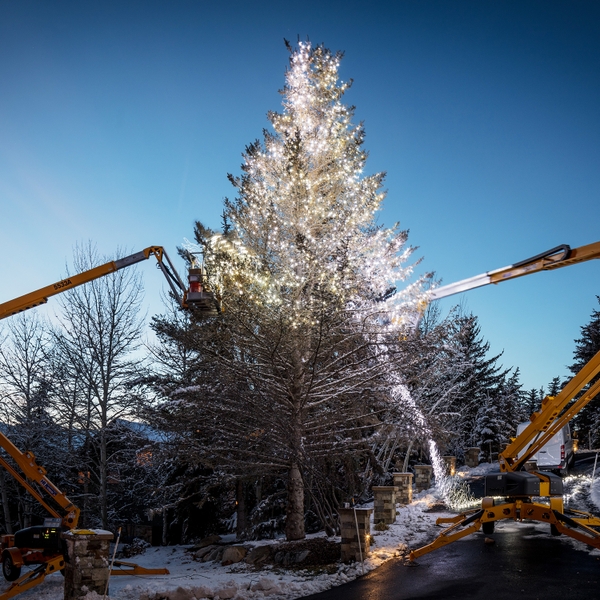The Daring Dirtbags Who Make Salt Lake City Sparkle
In Utah, Christmas-tree lights are a very big deal. This is the itinerant crew of climbers, river guides, ski bums, trekkers, and thru-hikers who work like super-elves to get ready for the year’s most beautiful holiday.
New perk: Easily find new routes and hidden gems, upcoming running events, and more near you. Your weekly Local Running Newsletter has everything you need to lace up! .
Ryan Irvin is 55 feet in the air, on the railing-guarded platform of a cherry picker, when the mechanical boom that moves him around stops working. He’s standing on the second rail with no safety gear, reaching into the top of a 67-foot ponderosa pine tree named Big Red, which stands near a busy intersection in the middle of , 45 miles south of Salt Lake City. It’s the first week of November, and the smells of McDonald’s, Burger King, and Panda Express are wafting from their respective street corners by the town’s library and police station, where Big Red and several other large trees rise up. Car horns punctuate the traffic noise as drivers yell things like “Thank you!” and “It’s not Christmas yet!”
Time is money when you’re a professional Christmas-light installer who gets paid by the number of strands you hang, so Irvin continues his aggressive branch-wrapping from the outside in, toward the trunk. Deep inside Big Red, two guys with arborist harnesses hang from ropes, ready to connect Irvin’s outside strands to the power cords they’ve strung up the tree. Travis “T-Pow” Powell is even higher up, tightrope-walking all the way out on a slippery limb to individually wrap smaller branches that he can’t reach from his lift. The tree shakes from all the thrashing, as balled-up light strands fall out of buckets and pinball to the ground. Branches crack off and land on Terrence Ferguson, the operations manager, as he tries to re-splice the lift’s wires so Irvin can eventually come back down. As the rain picks up, the temperature drops 20 degrees in three hours, and by 10 A.M. everybody is cold and soaked.
“This tree eats lights,” says T-Pow, referring to Big Red, which they’ll wrap exclusively in red LEDs. “The dense-needle bushes on the outside cover all the branches inside that have lights on them, so you have to put up even more to cover it. That also lets us make more money.” It’s T-Pow’s 11th season here as a Christmas-light installer, or as he calls it: an L-pro. (That stands for “lighting professional.”) As a veteran L-pro, the 37-year-old will make at least $55,000 in the ten weeks between October 1 and December 15, then spend the rest of his year on climbing and skiing expeditions in Alaska, where he lives and guides, interspersed with mountaineering trips to Argentina and maybe a powder-chasing adventure in Japan.
“I’m the only one here who actually likes Christmas lights,” he said earlier, while driving a company van to the job with three pairs of gloves drying on the dashboard. “I take pride in my work and always want it to look good, like when I would help my parents hang lights at home growing up.”











